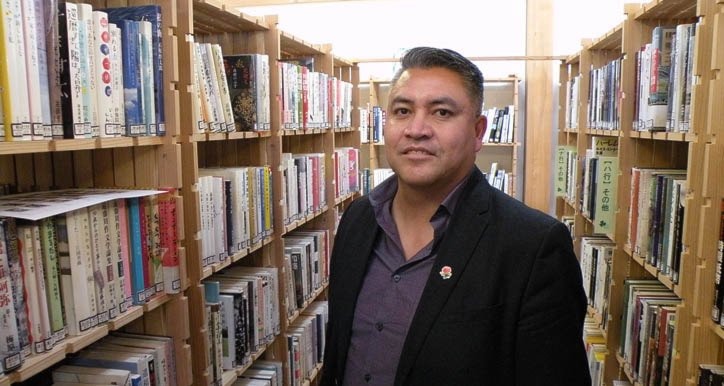NATORI CITY, JAPAN – If there is one certainty about the future of the B.C. forest industry, it is the growing participation of indigenous people whose traditional territories take in most of the Crown land in the province.
Aboriginal leaders assumed responsibility for ecosystem-based harvesting in the Great Bear Rainforest agreement, mapping out protected areas with the B.C. government. And around the province, more than 100 forest harvest licences have been assigned to aboriginal communities as a step toward treaties.
Now an aboriginal leader has joined the province's annual forest industry trade mission to Asia, where cultural ties and business are intertwined by long tradition.
Terry Teegee is a registered professional forester, a member of the Takla Lake First Nation and tribal chief of the , representing eight reserve communities in the Prince George area. He spoke with Black Press as he toured a public library built with Canada Wood, B.C. and Canadian government sponsorship to replace one wiped out by the 2011 tsunami that devastated the east coast of Japan.
"I'm here to assist the province in terms of promoting B.C. forest products, Canadian forest products, which we're very much involved with because we hold tenures, we have companies," Teegee said. "We do have ownership of mills. That's what basically drives our economy too."
Carrier Sekani member communities run logging companies to supply fibre to local mills.
Burns Lake Native Development Corp. is partner with Oregon-based Hampton Affiliates in Babine Forest Products, whose sawmill was rebuilt after a devastating fire in 2012.
And after Oregon-based Pope & Talbot went bankrupt in 2007, a new company called Conifex took over its sawmills at Fort St. James and later Mackenzie.
Conifex CEO Ken Shields said the company has unique relationships with aboriginal communities. When the company restarted the Fort St. James operation in 2008, the Nak'azdli, Tl'azt'en and Takla Lake First Nations were original shareholders as well as employees.
When the company took over the Mackenzie operations in 2010, it made commercial arrangements with the three communities in the harvest area, Kwadacha, Tsay Keh Dene and the McLeod Lake Indian Band, which has its own logging and construction companies.
Conifex buys roadbuilding timbers from the small mill at Kwadacha and sponsors education programs in Kwadacha and Tsay Keh Dene, both remote communities on Williston Lake.
Conifex started up a 36-megawatt biomass at its Mackenzie facilities last year. The company is shifting to process more balsam and spruce as the supply of lodgepole pine declines due to beetle impact, said Hans Thur, vice-president of sales and marketing.
Japan is Conifex's third largest market by volume and buys high-quality lumber, Thur said. Lower-grade pine is currently sold to Chinese buyers, with stiff competition from Russia where the ruble has been devalued.

[]



